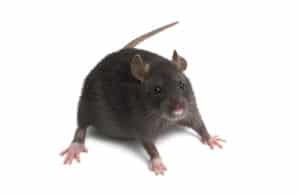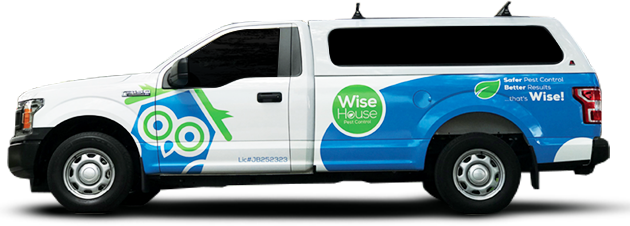South Florida’s sunshine and plentiful resources create an ideal habitat—not just for residents and visitors seeking warm weather, but for opportunistic rodents as well. Mice and rats, with their gnawing teeth and furry bodies, are increasingly finding their way into homes and warehouses in South Florida, seeking food and shelter. While they may seem harmless, their presence poses serious health risks and potential property damage.
Some rodents aren’t just hungry, they’re messy eaters. In addition to consuming our food, they can contaminate your home with their urine, droppings, and hair. Contamination can spread diseases like the plague, typhus, and salmonella, putting you and your family at risk. They’re also known to cause electrical fires in some cases because they love gnawing on wires.
Understanding their habits, the dangers they pose, and how to prevent and control them is essential for every homeowner and business owner in South Florida. In this blog post, we’ll talk about the top 5 rodents in South Florida and provide you with information you need to know in order to protect your home and health.

The House Mouse, known scientifically as Mus musculus, is one of the most widespread and adaptable rodents globally. Originating in Central Asia, these small, slender rodents have a long history of cohabiting with humans. Their ability to thrive in diverse environments has enabled them to spread across the world, making them common pests in homes, especially in urban areas.
Appearance – Small, sleek body with prominent ears and a long, thin tail. Typically gray or light brown in color. Weighs between 12-30 grams and measures about 6-7 inches in length, including the tail.
Habitat – Indoor environments such as walls, attics, and pantries. Prefers areas close to food sources and warmth. Can adapt to various environments, including rural and urban settings.
Breeding – A female House Mouse can give birth to a litter of 5-6 young every three weeks, potentially producing up to 35 offspring in a year.
Mobility – Mice can climb vertical surfaces, jump up to 12 inches, and run along cables and wires.
Adaptability – They can survive without direct water sources, getting moisture from the food they eat.
Sensory Abilities – House Mice have excellent senses of smell and hearing but relatively poor vision. They rely on their whiskers to navigate through tight spaces.
Reproductive Rate – Mice reach sexual maturity at just six weeks old, leading to rapid population growth if left unchecked.
The Deer Mouse, scientifically known as Peromyscus maniculatus, is a common rodent native to North America. Recognized for its agility and adaptability, the Deer Mouse is primarily found in rural and semi-rural areas. This rodent has a distinct appearance and poses Hantavirus, which can be fatal to humans, and other pathogens such as Lyme disease and Leptospirosis.
Appearance – Small, slender body with large ears and a bi-colored tail. Typically brown or gray on the back with a white underbelly. Weighs between 15-32 grams and measures about 5-8 inches in length, including the tail.
Habitat – Prefers rural and semi-rural environments, including forests, grasslands, and farmlands. Often nests in tree cavities, log piles, and abandoned burrows. Can sometimes invade homes, particularly in rural areas, seeking warmth and food.
Breeding – Female Deer Mice can produce several litters per year, with each litter consisting of 3-6 young, leading to rapid population growth.
Mobility – Excellent climbers and jumpers, capable of scaling vertical surfaces and leaping significant distances.
Adaptability – Can thrive in a wide range of habitats, from woodlands to deserts, showing great ecological versatility.
Sensory Abilities – Deer Mice have sharp eyesight and hearing, aiding them in nocturnal activities and predator avoidance.
Lifespan – Typically live up to 1-2 years in the wild, but can live longer in protected environments with ample food and shelter.
The Norway Rat, also known as the Brown Rat, is one of the most prevalent and notorious rodents worldwide. Originally from northern China, these robust rodents have spread globally, thriving in urban and rural environments alike. Their adaptability and size make them significant pests in many regions, including South Florida. They can carry diseases such as Leptospirosis, Rat-Bite Fever, and Salmonella, which can be transmitted to humans and pets.
Appearance – Large, robust body with a blunt nose and small ears. Typically brown or gray in color with a lighter underside. Weighs between 200-500 grams and measures about 9-11 inches in body length, with a tail shorter than the body.
Habitat – Prefers burrowing in the ground, often found in basements, sewers, and ground-level structures. Common in urban areas, especially near sources of food and water. Can also be found in rural areas, nesting in fields, farms, and along waterways.
Breeding – A female Norway Rat can produce up to 12 litters per year, with each litter containing 6-12 young, leading to rapid population growth.
Mobility – Excellent swimmers and burrowers, capable of digging extensive tunnel systems.
Adaptability – Highly adaptable, able to survive in a variety of environments, from urban sewers to rural fields.
Sensory Abilities – Acute sense of smell and hearing, but relatively poor vision. They rely heavily on their whiskers to navigate in the dark.
Lifespan – Typically live up to 1 year in the wild, though they can live longer in controlled environments with ample food and shelter.
The Roof Rat, also known as the Black Rat, is a common rodent in South Florida. Originating from Southeast Asia, these agile climbers have spread worldwide, favoring warm climates. Their ability to nest in high places makes them a significant pest in both urban and suburban environments. They can carry diseases such as Typhus, Leptospirosis, and Rat-Bite Fever, which can be transmitted to humans and pets.
Appearance – Slender body with large ears and a pointed nose. Typically black or dark brown in color with a lighter underside. Weighs between 150-250 grams and measures about 13-18 inches in length, including the tail, which is longer than the body.
Habitat – Prefers nesting in high places such as attics, rafters, trees, and upper levels of buildings. Often found in urban and suburban areas with abundant food sources. Can also be found in agricultural settings, nesting in barns, silos, and orchards.
Breeding – Female Roof Rats can produce up to 6 litters per year, with each litter containing 5-8 young, leading to rapid population growth.
Mobility – Excellent climbers and jumpers, capable of traversing cables, wires, and tree branches to access nesting sites.
Adaptability – Highly adaptable, able to thrive in various environments, from urban buildings to rural farmlands.
Sensory Abilities – Acute sense of smell and hearing, but relatively poor vision. They rely on their whiskers to navigate in the dark.
Lifespan – Typically live up to 1 year in the wild, though they can live longer in controlled environments with ample food and shelter.
The Marsh Rice Rat, scientifically known as Oryzomys palustris, is a semi-aquatic rodent native to the southeastern United States. Found primarily in wetland areas, these rats are excellent swimmers and have adapted well to marshy environments. Their presence in South Florida’s wetlands makes them a notable part of the local ecosystem. They can carry diseases such as Hantavirus and Leptospirosis, which can be transmitted to humans.
Rodents enter homes through small openings and cracks in walls, foundations, roofs, and around utility lines. They can squeeze through gaps as small as a dime.
Signs of a rodent infestation include droppings, gnaw marks, nesting materials, scratching sounds in walls or ceilings, and sightings of live or dead rodents.
To prevent rodents, seal entry points, store food in airtight containers, maintain cleanliness, remove clutter, and eliminate sources of standing water.
If you find a rodents in your home, it is best to contact a professional pest control service.
Rodents can cause significant property damage by gnawing on electrical wires, insulation, and structural materials, leading to fire hazards and costly repairs.
Yes, rodents are highly adaptable and can live in a variety of environments, including urban, suburban, and rural areas, as long as they have access to food, water, and shelter.
Rodents reproduce rapidly. For example, a female House Mouse can produce up to 35 young per year, leading to fast population growth if not controlled.

Ready to send away pests without harming your pets? Getting started with Wise House Environmental Services is as easy as 1-2-3:
With Wise House Environmental Services, you get more than just effective pest control; you get peace of mind, knowing that your home is without pests and safer for your pets.
Our approach to pest control combines science with safety, offering you the kind of targeted, effective solutions that you won’t find with just any other pest control service. Our services have made a world of difference for homeowners, and we can do the same for you. Your pets will thank you for it!
We serve Port St. Lucie,Lake Worth, Boyton Beach, Palm Beachand the Treasure Coast.


© 2023 All Rights Reserved. | Sitemap